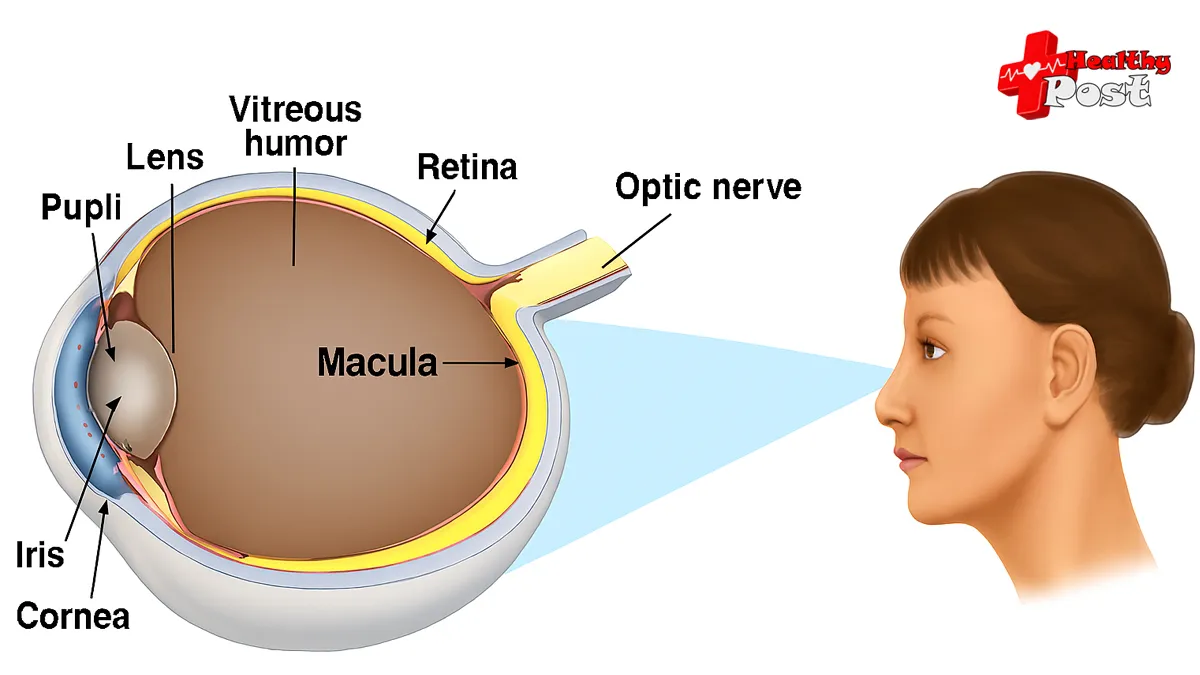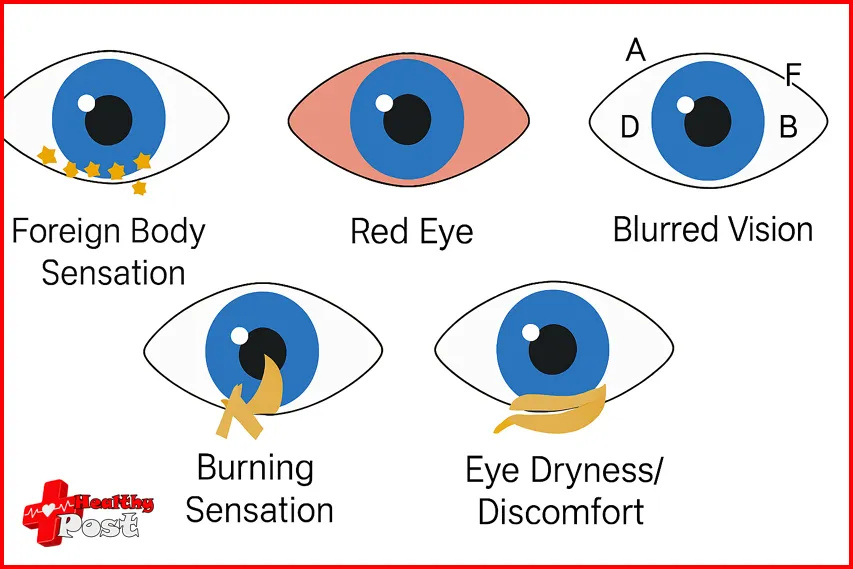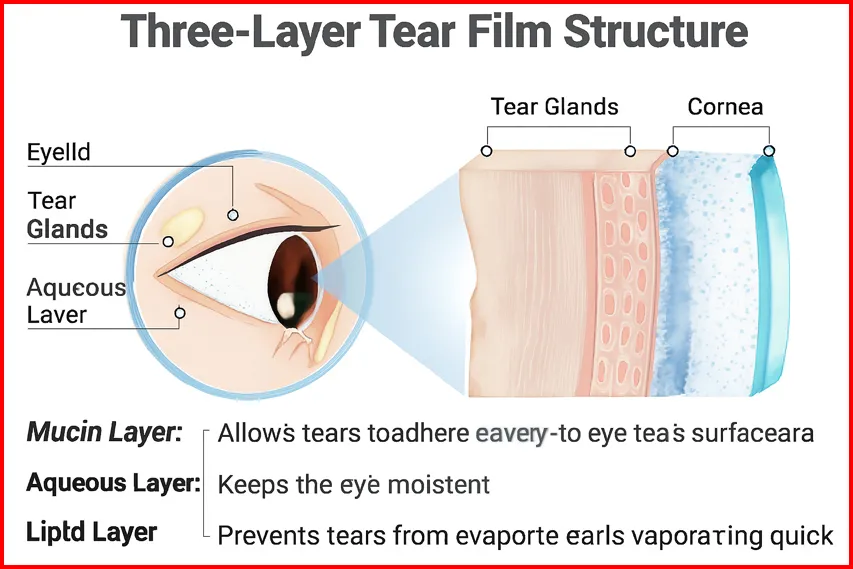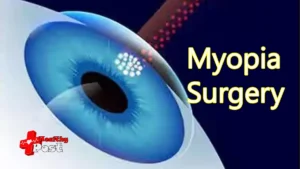
Cataract surgery may cause discomfort due to dry eyes
Cataract surgery can improve vision, but some elderly patients report experiencing dry eyes and occasional stinging. This is a common condition after cataract surgery , and it’s not uncommon. Let’s discuss this topic today.
Postoperative dry eyes are not a sign of surgical failure; rather, they are a common, predictable, and reversible perioperative condition. With an improved mindset, scientific treatment, and appropriate nursing care, most patients experience significant symptom relief within one to three months, regaining comfortable, clear vision.
Symptoms of dry eyes after cataract surgery
1. Dryness: The eyes feel dry and uncomfortable, lacking moisture.
2. Foreign body sensation: Feeling like there are sand or foreign objects in the eyes, which always makes you uncomfortable, but no obvious foreign body is found during examination.
3. Pain: stinging or burning sensation in the eyes.
4. Tears: The eyes will reflexively secrete excessive tears, causing tears.
5. Visual fatigue: feeling tired after using your eyes for a long time.
6. Blurred vision: Vision is sometimes good and sometimes bad, and there is a foggy feeling when looking at things, which can be relieved by blinking.
7. Increased secretions: The eyes may feel sticky and may have sticky or watery secretions, which are more obvious after waking up in the morning.
8. Red eyes: The eyes are prone to redness, especially the conjunctiva is prone to congestion.
9. Photophobia: Very sensitive to light and afraid to open eyes in strong light.
10. Nighttime discomfort: Dryness symptoms are obvious at night or when waking up in the morning.

Causes of dry eyes after cataract surgery
First, the incision during cataract surgery will cut off some corneal nerve fibers , leading to decreased corneal sensation, which further leads to reduced tear secretion, causing or aggravating dry eyes.
Secondly, during the operation, the eyes are exposed to the air for a long time and are continuously irradiated by the strong light of the surgical microscope. At the same time, the effects of disinfectants such as iodine tincture will destroy the integrity of goblet cells and the ocular surface epithelium, affecting the stability of the tear film and leading to postoperative dry eye symptoms.
The third is the activation of the inflammatory response. The surgery itself is a stress stimulus that will activate local inflammatory factors, leading to the persistence of ocular surface inflammation and damaging the function of tear film-related cells. In addition, the inflammation itself will aggravate dry eyes.
Another factor is postoperative drug stimulation. After cataract surgery, a variety of eye drops are often needed, such as antibiotics, hormones, non-steroidal anti-inflammatory drugs, etc. In addition to the toxicity of the drugs themselves, the preservatives in them can also damage corneal epithelial cells and cause “drug-induced dry eyes.” Of course, this is only part of the main reasons.
In addition, factors such as the patient’s older age, diabetes, and complex surgery can also aggravate dry eyes.

What to do if you have dry eyes after surgery
First of all, maintain a good attitude and accept the existence of dry eyes after surgery.
Postoperative dry eyes are a common temporary reaction. Studies have shown that the incidence of dry eyes after cataract surgery can reach approximately 50%. Symptoms are most pronounced one to two weeks after surgery, including dryness, foreign body sensation, tearing, and fluctuating vision. Excessive anxiety, frequent medication use, and doubts about the effectiveness of surgery due to discomfort can easily lead to a vicious cycle of “psychological anxiety → worsening dry eyes.” A positive attitude is the first important remedy for treating dry eyes.
Secondly, under the guidance of a doctor, you can use preservative-free artificial tears , which can effectively relieve dryness and foreign body sensation and reduce irritation to the corneal epithelium. At the same time, you can also use some preparations that promote corneal repair, such as: calf blood deproteinized extract eye gel ; vitamin A eye ointment ; recombinant human epidermal growth factor eye drops , etc., to enhance epithelial repair and improve the ocular surface microenvironment.
Third, if there is significant ocular surface inflammation, further anti-inflammatory treatment is still necessary, such as the use of 0.05% cyclosporine A eye drops or short-term, intermittent use of low-concentration glucocorticoid eye drops to relieve inflammation and stabilize tear film function.
Fourth, for patients with obvious decreased tear secretion function, the use of tear secretion-promoting drugs, such as diquafosol sodium eye drops , can be considered to enhance the function of the tear film by stimulating glandular secretion and improving the mucin and aqueous layers.
Of course, when combined with meibomian gland dysfunction (MGD), simultaneous eyelid margin physical therapy is necessary to improve lipid secretion and alleviate evaporative dry eye. Common measures include: warm compresses; eyelid margin cleansing (such as tea tree oil cleansers); meibomian gland fumigation massage; and intense pulsed light (IPL) therapy.
Finally
Postoperative eye hygiene and lifestyle management should not be neglect. Some patients, after regaining their sight, begin to overuse their eyes, such as using electronic products for extend periods, staying up late, having irregular sleep patterns, and being exposed to direct air conditioning. These behaviors can aggravate dry eye symptoms and even induce eye fatigue, fluctuating vision, headaches, and dizziness.
If you experience dry eyes after cataract surgery, don’t be afraid or nervous. Visit a professional medical institution for an eye examination and receive a comprehensive plan to alleviate the discomfort. Under your doctor’s guidance, use medication to manage your symptoms. Follow your doctor’s recommendations for follow-up examinations and adjust your medication regimen promptly.

